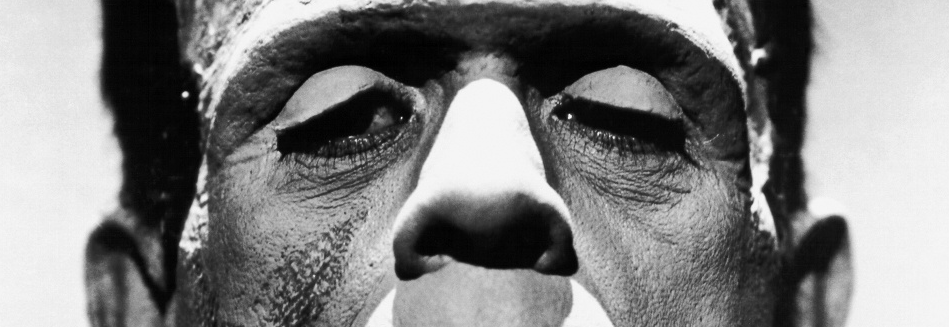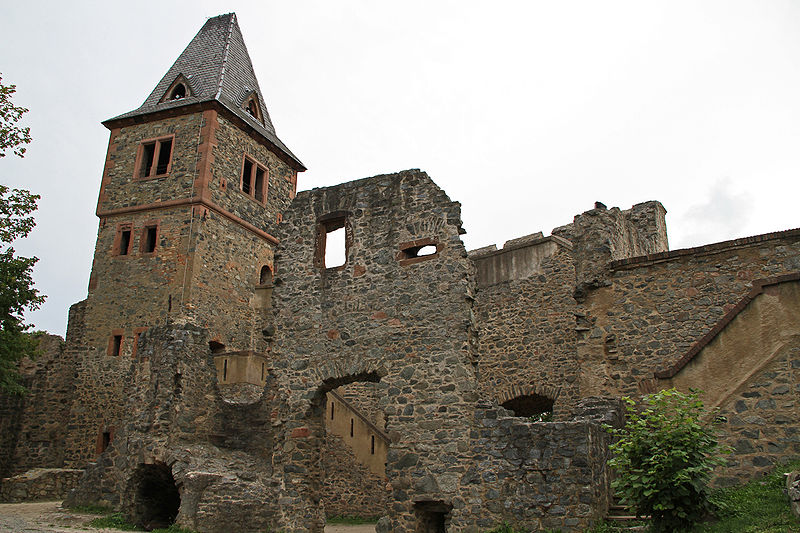Day 13: Castle Frankenstein: Birthplace of a “vile devil”
31 Days of Halloween: On Atlas Obscura this month, every day is Halloween. Stop by the blog every day this month for true tales of the unquiet dead. Come for the severed heads, stay for the book bound in human skin. Every story is true, and each one is a real place you can visit. We dare you.

Dr. Frankenstein, I presume? Today we explore the Castle Frankenstein, the real life alchemist who lived in the castle, and the brilliant young lady who wrote the first true science fiction novel.
Born in 1673 in Castle Frankenstein, Johann Konrad Dippel was born for infamy.
By his mid 20’s he was raising hell as a young thelogian who railed against the papacy. A polarizing figure, Dippel found staunch defenders, as well as intense criticism. By his 30’s he was dabbling in alchemy and was an “avid dissector” of animals.
This love of dissection and experimenting with flesh and bone would be shown in one of his creations, a substance known as “Dippel’s Oil.” Created by burning animal bones, it was a dark, terrible smelling oil which later served as a weapon of war used to poison wells. (Technically it wasn’t poison, but it effectively made the water undrinkable.) Dippel also is credited for having lent a supply of bone ash to the paint-maker who created Prussian Blue.

Frankenstien Castle, 5 km south of Darmstadt in Germany
However, what Dippel has become most famous for is as the possible real life inspiration for Mary Shelley’s Dr. Frankenstein. Dippel certainly qualified for the title of “mad scientist” and claimed to have discovered the Elixir of Life and “the means to exorcize demons through potions he concocted from boiled animal bones and flesh.” His contemporary and former friend Swedish mystic Emanual Swedenborg called him a “most vile devil … who attempted wicked things.” Dippel himself may have contributed to his own dark reputation, saying that he had made a deal with the devil in exchange for secret knowledge as a marketing scheme to help him sell his oils and elixirs. Dippel eventually died in Wittgenstein castle, from what his contemporaries thought may have been poisoning.
Of course, the historical proof of the Dippel - Frankenstein connection is tenuous at best. It’s unclear whether Shelley even named the book after the Castle, as she claimed the name came to her in a dream. While some historians (ussually of a less academic background) believe that Mary Shelley’s stepmother was the translator for Jacob Grimm, of the Grimm brothers fame, and he passed down the stories of Dippel, hard evidence of this is nowhere to be found.
What Shelley certainly did do is draw from the science of her day to create a memorable dystopian vision and arguably the first true science fiction novel. One explanation of the Frankenstein name is that the mad scientist figure was inspired by Ben Franklin, hence Frankenstein, an idea the is extremely appealing. (It should also be noted that Mary Shelley was a total Romantic era goth and kept bits of her husband’s heart and locks of dead children’s hair in her desk.)
What is sure is that by referencing the electrical “reanimation” work of scientists such as Giovanni Aldini – who was busy making dead animals twitch and move with electricity – she painted a picture of the science run amuck, creating a metaphor we still use to this day. While the connection to Dippel has its appeal, the book needs to no “real life” villian to be amazing, and Dippel is a manicial legend in his own right without being tied to Shelley’s doctor.
SEEK THE MONSTER
CASTLE FRANKENSTEIN, Darmstadt, Germany




Follow us on Twitter to get the latest on the world's hidden wonders.
Like us on Facebook to get the latest on the world's hidden wonders.
Follow us on Twitter Like us on Facebook